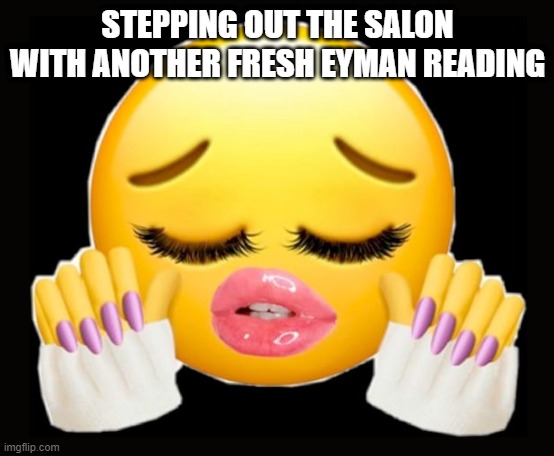Author’s Note: Listen, I got a lot of swag, and I will add my iconic Jordan Flair™ to this piece of new media soon, because I have a lot of thoughts on this…but right now, this is for that sweet, sweet COMPLETE score.
Once again, I am forced to muse over another one of Eyman’s intellectual musings about simple words. This time, it is “new media”. Here, Eyman delves into new media’s complexities and contested definitions within the realm of digital rhetoric.
Eyman begins by acknowledging the inherent challenges in defining this concept. Unlike established fields with clear referents, new media defies easy categorization, prompting questions about its temporal and technological boundaries. Eyman astutely highlights the fluidity of the term, noting its contingent nature and the ongoing shifts in meanings over time.
One of the central themes in Eyman’s discussion is the multifaceted nature of new media. Scholars like Cynthia Selfe view new media as texts primarily crafted in digital environments. They incorporate diverse types designed for digital consumption. This perspective emphasizes the fusion of multimedia elements within digital compositions, underscoring the interactive and dynamic nature of contemporary communication.
Jay Bolter and Richard Grusin’s concept of “remediation” adds another layer to the discourse. They examine how new forms reshape and reconfigure older media forms when integrated into digital compositions. By emphasizing the interconnectedness of these different forms, Bolter and Grusin highlight the transformative power of new media in shaping cultural expression and communication practices.
Lev Manovich takes a more structural approach, defining the concept as cultural objects constructed from computer-accessible numerical data. Through his exploration of principles such as modularity and automation, Manovich describes the underlying characteristics that distinguish new forms from traditional forms. His framework offers valuable insights into the computational foundations of new media and their dynamic, variable nature.
Packer and Jordan offer a complementary perspective, focusing on observable characteristics such as integration, interactivity, and hypermedia. Identifying these key features highlights the unique qualities that define new media as a distinct medium characterized by its hybridity and interactivity.
Anne Wysocki’s perspective adds nuance to the discussion by highlighting the role of design in new media texts. According to Wysocki, these texts are crafted to foreground their materiality, irrespective of their digital or non-digital nature. This emphasis on design underscores the importance of aesthetics and presentation in shaping digital communication practices.
Overall, Eyman’s exploration of “new media” offers a variety of perspectives that reveal how we can conceptualize and engage with this dynamic field. As digital communication continues to evolve, the discourse surrounding new media will undoubtedly remain a vibrant and evolving area of study.





Leave a Reply